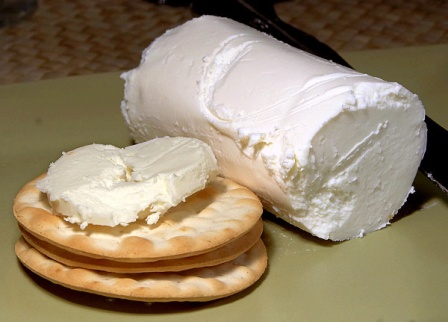Goat farming is a highly profitable venture because of the numerous products that can be made from goat’s milk. Among these, goat cheese, pastillas, yogurt, and soap stand out as highly marketable and in-demand items. The growing popularity of goat milk soap in spas and beauty shops, in particular, reflects the expanding interest in natural and organic skincare products. In this article, we’ll take a closer look at some of these promising goat milk products.
1. Goat Milk Yogurt
Goat milk yogurt is a nutritious and delicious dairy product that is easy to make at home. It is an excellent source of probiotics, calcium, and protein. Here’s how you can prepare it:
Ingredients:
- 2 quarts raw goat milk
- 2 tbsp yogurt (as a starter culture)
- Saucepan
Procedure:
- Pour 2 quarts of raw goat milk into a large saucepan. Attach a thermometer to monitor the temperature.
- Heat the milk to 180°F (82°C), then remove from heat and allow it to cool to 115–118°F (46–48°C).
- Add 2 tablespoons of yogurt into a glass measuring cup.
- Pour some of the cooled milk into the measuring cup and stir into the yogurt.
- Combine the yogurt mixture back into the saucepan, then pour it into two quart-sized mason jars.
- Place the jars into a small cooler with warm water, leaving the lid open, and let them sit undisturbed for at least 8 hours.
- After the yogurt has set, refrigerate it overnight to allow it to solidify.
This simple process yields a delicious and creamy yogurt that is packed with beneficial bacteria and nutrients.
2. Goat Milk Cheese

Goat cheese is another popular product made from goat’s milk. It’s creamy, soft, and flavorful, and it can be easily prepared at home. Here’s how:
Ingredients:
- 2-4 quarts goat milk (depending on how much cheese you want)
- 3/4 cup white vinegar
- Candy thermometer
- Spoon
- Strainer
- Cheesecloth or a clean pillowcase
- Seasonings (optional)
Procedure:
- Heat the goat milk in a stainless steel pot to 180°F, using a candy thermometer to monitor the temperature.
- Stir in the vinegar and continue to heat until curds form, then turn off the heat.
- Pour the mixture through a cheesecloth-lined strainer to separate the curds and whey.
- Let the curds drain for 2-8 hours, depending on the desired consistency (longer draining results in drier cheese).
- Once the cheese has drained, transfer it to a bowl and add salt or other seasonings like basil or chives.
- Refrigerate the cheese for up to one week. Serve it with bread, crackers, or salads.
This fresh, homemade goat cheese is a great addition to any meal, offering a deliciously creamy texture and a tangy flavor.
3. Goat Milk Pastillas
Pastillas de leche are sweet, milk-based candies that can be made using either cow’s or goat’s milk. The rich, creamy texture of goat’s milk makes these pastillas extra indulgent.
Ingredients:
- 1 liter fresh goat milk
- 1/2 cup sugar
- 1/2 tsp cornstarch
- Stirring ladle
- Bowl
Procedure:
- Pour 1 liter of fresh goat milk into a pan and add 1/2 cup of sugar and cornstarch.
- Boil the milk, stirring continuously until it thickens.
- Once the milk has thickened, lower the heat and continue evaporating until the mixture can be lifted by a ladle.
- Place the thickened pastillas mass in a bowl to cool.
- Once cooled, roll the mixture into cylindrical shapes on a surface dusted with cornstarch.
- Cut the pastillas into small pieces and wrap each one in bond paper, then Japanese paper.
- Store in boxes for sale or personal consumption.
These delightful milk candies are a favorite treat and make for a great gift or local delicacy.
4. Goat Milk Soap
Goat milk soap has grown in popularity due to its rich, moisturizing properties. It is known to benefit the skin by providing hydration, soothing irritation, and offering antibacterial properties. The process of making goat milk soap is fairly simple.
Ingredients:
- 24 oz distilled water
- 12 oz lye crystals
- 78 oz olive oil
- 6 oz coconut oil
- 6 oz palm oil
- 3 oz goat’s milk powder
- Soap mold with lid
- Emulsion blender
Procedure:
- Add the distilled water to a glass container and carefully add lye crystals to create a lye solution. Stir until dissolved.
- Heat the coconut and palm oils over low heat and stir in olive oil.
- When both the lye solution and oils reach around 100°F, mix them together using an emulsion blender.
- Add goat’s milk powder to the mixture when it begins to thicken.
- Pour the mixture into a soap mold and cover with a towel. Let it sit for 24 hours to harden.
- After 24 hours, remove the soap, cut it into bars, and allow it to dry for about 4 weeks on a wire rack.
This homemade goat milk soap is not only a profitable product but also a sought-after item in spas and beauty salons due to its natural ingredients and skin benefits.
Conclusion
Goat’s milk provides a versatile base for creating a wide range of high-value products, from food items like yogurt, cheese, and pastillas to beauty products such as soap. The demand for these products continues to rise, especially with the increasing consumer preference for natural and organic products. Whether you’re looking to start a goat farming business or expand an existing operation, these products offer a promising opportunity for both profit and consumer satisfaction.

i like it its so delicious the goats milk pastillas
experience the best goat's milk pastillas de leche in town: http://raffycooper.blogspot.com/2012/09/delectably-milky-soft-pastillas-de-leche.html.